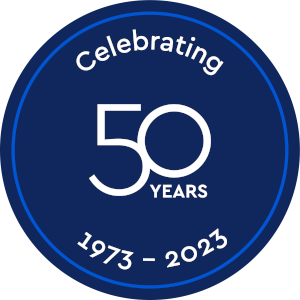What is geospatial surveying?
Geospatial, or land surveying, is the measurement and mapping of our surrounding environment using mathematics, specialised technology, and equipment. Surveyors can – and do – measure just about anything. The results can then be used to establish boundaries of an environment and understand the relationship between what you can see and also what is happening beneath the surface – making it easier to decide on a project’s direction.
Types of surveys
The types of surveys carried out fall into three main categories:
Measured building surveys: These show the architectural elements and facades of buildings. Equipment, such as a Leica RTC 360 Laser Scanner, captures data that provides clients with highly detailed 3D colour point clouds, from which they can produce detailed line drawings or 3D models. Line drawings show streetscapes and architectural elements, which are required by developers and architects, who seek to record what exists, to enable them to update, enhance or develop what is already there.
There is also increased demand for digital twins of buildings, which give asset managers (public and private) a digital version of buildings that exist in real life. This allows for online collaboration, leading to increased speed of decision making. It also delivers an environmentally friendly way of ‘meeting on site’ or running a simulation of a building’s development or performance, highlighting potential issues in new designs.
Topographical surveys: Topographical surveys provide the complete picture of a site above ground. They identify the boundaries of the land, existing building positions on or adjacent to the site, and all the road, path and railway locations. They also feature street furniture, watercourses, underground services, pipelines and trees.
Underground utilities surveys: These locate the presence or absence of underground services on a site, using ground penetrating radar (GPR) and electromagnetic equipment, such as a CAT and genny.
Anybody wishing to dig should, by law, know what services are located below, before breaking ground. Underground utility detection surveys can provide services locations to a level of confidence specified by the client. They show the position, type and depth of live, abandoned or redundant service networks.
Individually, each of these surveys is important. However, by undertaking all three, a customer will truly understand the challenges and opportunities presented by a site.
Benefits of becoming a surveyor
There are many benefits to choosing a career within the surveying profession. This includes a varied working environment, where no two days are the same, and which can provide the opportunity to literally travel the world. If you work for a company where you look after the full project, you will also go on-site and process the drawings using a huge range of digital skills.
Survey technology and software is advancing at a rapid rate, and being a part of this is really exciting. The opportunity to work with the latest technological innovations in modern surveying equipment and software like cameras, lasers, global positioning systems (GPS), geographic information systems (GIS) and software that would look more at home in an online gaming environment, enables the development of technical skills. However, the wider requirement of the role also offers the development of life skills too.
Once qualified, the salary and financial benefits are good too, with experienced surveyors being highly sought after.
Joining the profession
One of the ways Powers is growing its team is by championing geospatial apprenticeships, to encourage people to seek a rewarding career in land surveying. Powers has been running geospatial apprenticeships since 2021, with its very first apprentice, Joe, starting that year. Joe has since gone on to pass his apprenticeship and become a full-time member of the Powers team.
Lucy Powers, director at Powers UK, explains: “Good geospatial mapping skills are desperately required in survey companies like ours and within contractors in the construction industry. It’s not just about knowing how to use the equipment, capture data and process it in the office – although this is obviously very important – it’s about equipping new employees with how to work in the construction industry, how to find a site, how to talk to clients, how to problem solve and be confident in their skills and abilities. This all comes with attending a Level 3 geospatial technician survey apprenticeship and working alongside senior surveyors within the profession; it is how we will create the surveyors of tomorrow and sustain the survey profession for generations to come.”
If you would like to find out more about a career with Powers, visit: www.powersuk.com/careers








